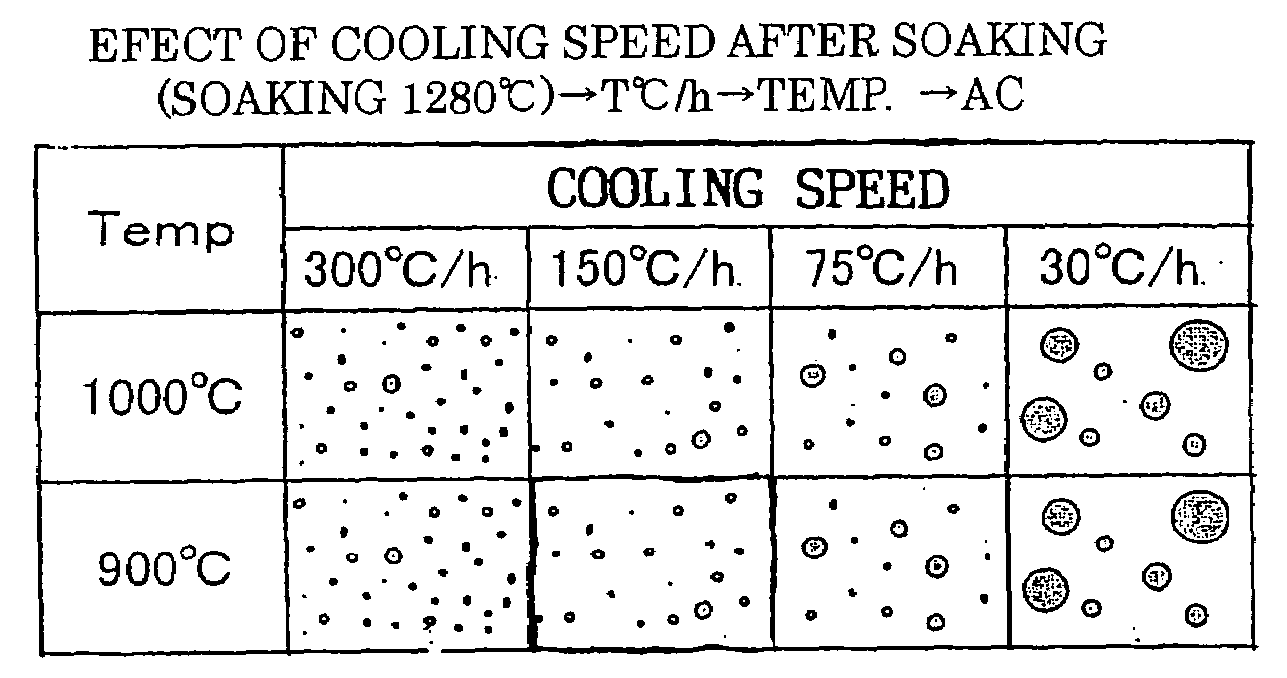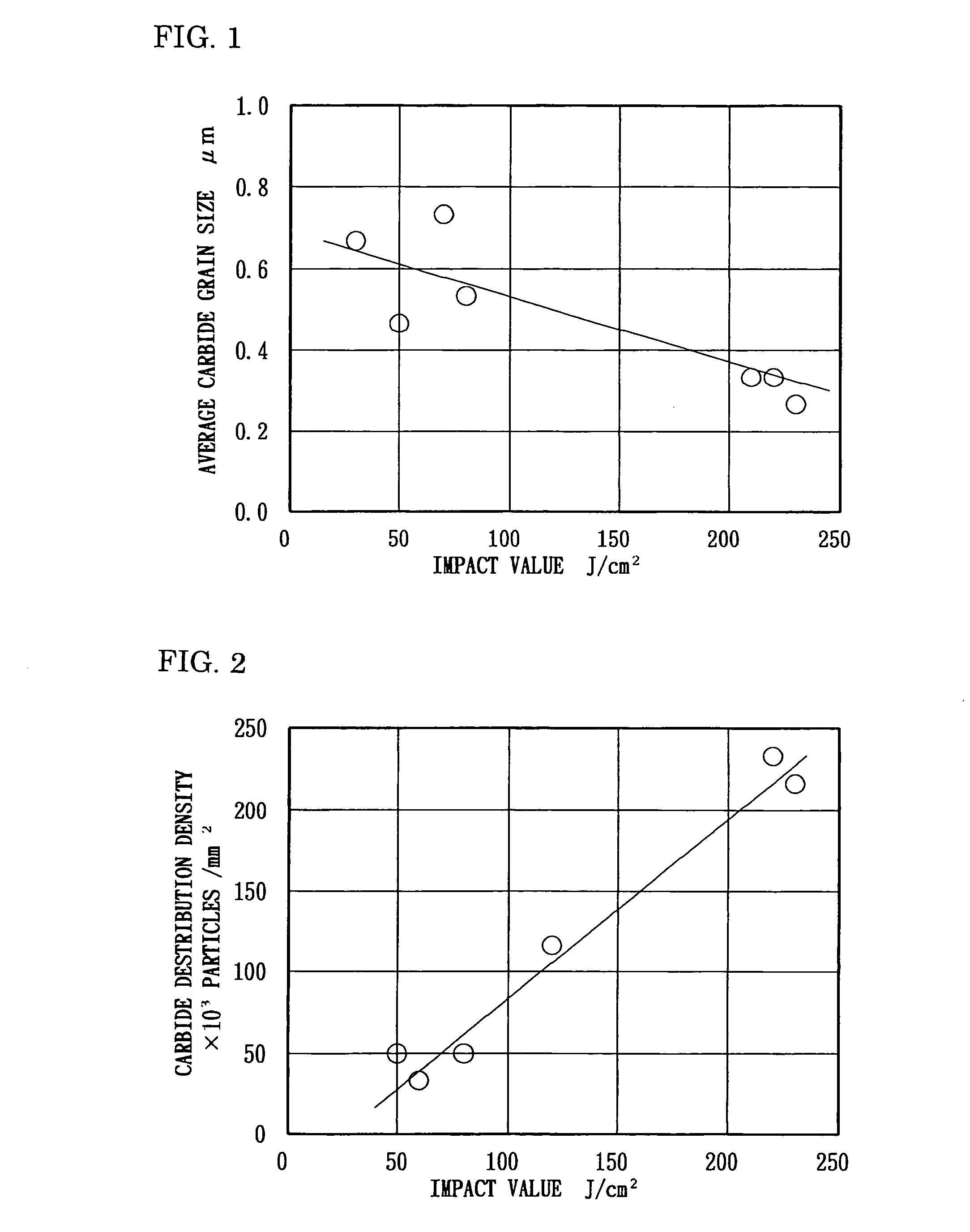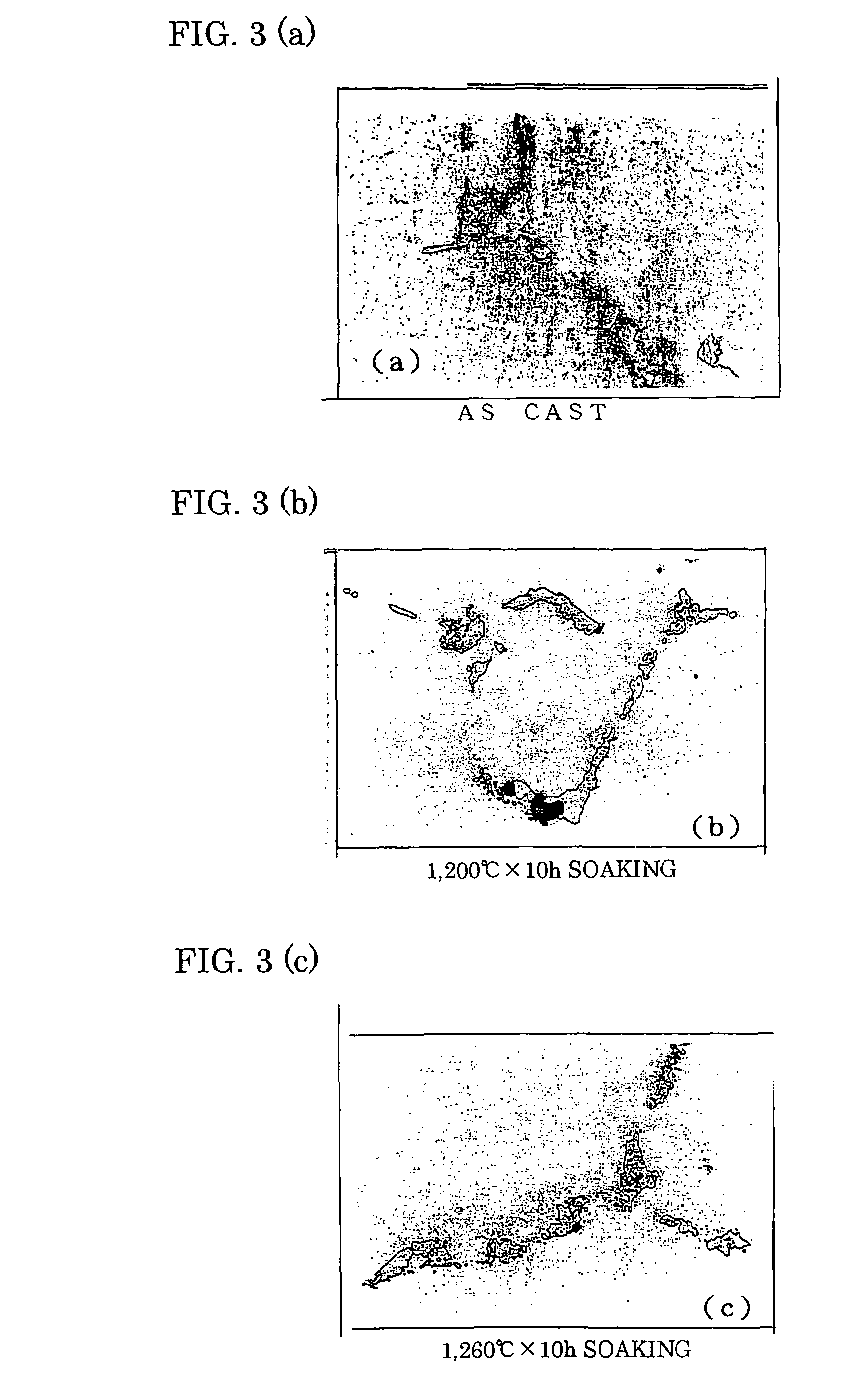High speed tool steel
a tool steel, high-speed technology, applied in the field of high-speed tool steel, can solve the problems of low carbon content of steel, poor toughness and mechanical properties of conventional tool steels, and occurrence of heat cracks in tool products, so as to improve the strength of the matrix, improve the toughness of the tool steel, and improve the hardness
- Summary
- Abstract
- Description
- Claims
- Application Information
AI Technical Summary
Benefits of technology
Problems solved by technology
Method used
Image
Examples
example
[0071]Re: The Research for Finding Out the Root Causes of the Premature Fractures:
[0072]In order to diagnose the premature fractures of a high speed tool steel, the inventors have researched the relationship between the impact value of the tool steel and each of: the average grain size of the precipitated carbides in the high speed tool steel; and, the distribution density of fine particles of the carbides in the tool steel. Specimens were obtained from the tool steel. Each of these specimens was first quenche data temperature of 1140° C., and then subjected to a tempering process at a temperature of 560° C. After that, the thus prepared specimen was subjected to a so-called “C-notched Charpy impact test” to determine the impact value of the tool steel. In this “C-notched Charpy impact test”, the specimen which was equal, in shape and dimension, to a “10RC notched Charpy test bar” shown in FIG. 11 was used. The test results of this “C-notched Charpy impact test” are shown in FIGS. 1...
PUM
| Property | Measurement | Unit |
|---|---|---|
| grain size | aaaaa | aaaaa |
| temperature | aaaaa | aaaaa |
| temperature | aaaaa | aaaaa |
Abstract
Description
Claims
Application Information
 Login to View More
Login to View More - R&D
- Intellectual Property
- Life Sciences
- Materials
- Tech Scout
- Unparalleled Data Quality
- Higher Quality Content
- 60% Fewer Hallucinations
Browse by: Latest US Patents, China's latest patents, Technical Efficacy Thesaurus, Application Domain, Technology Topic, Popular Technical Reports.
© 2025 PatSnap. All rights reserved.Legal|Privacy policy|Modern Slavery Act Transparency Statement|Sitemap|About US| Contact US: help@patsnap.com



